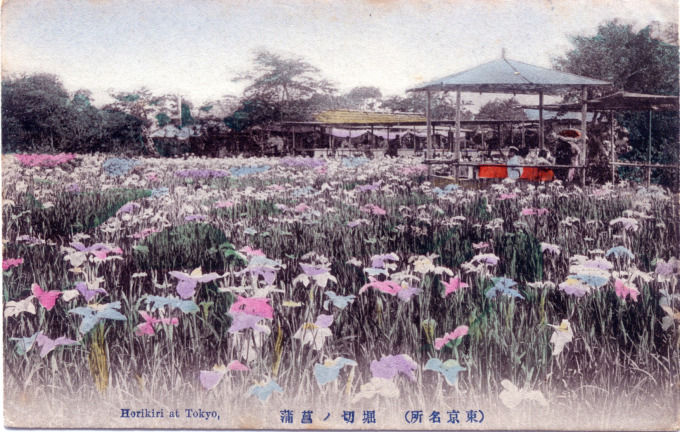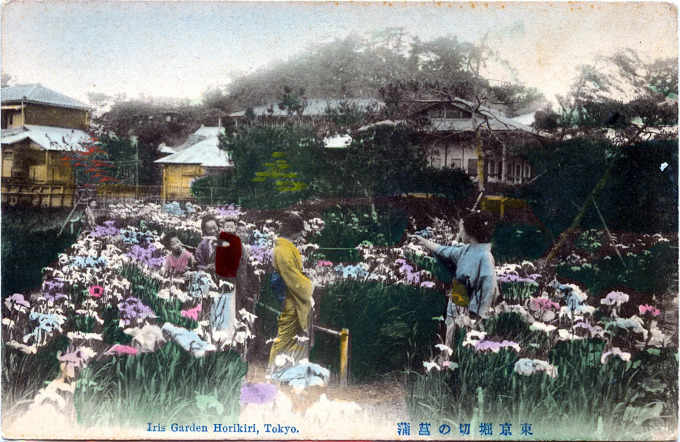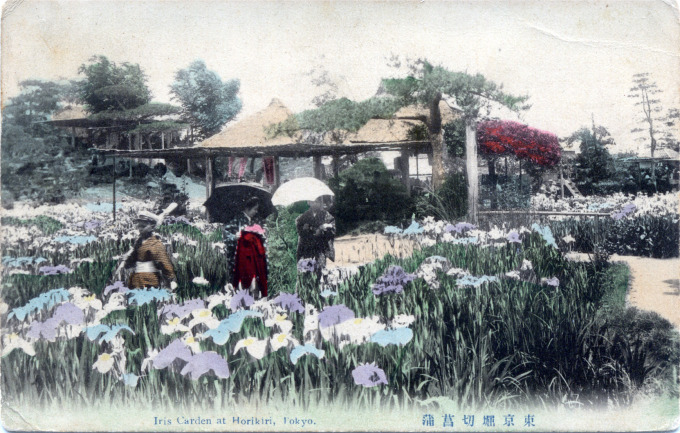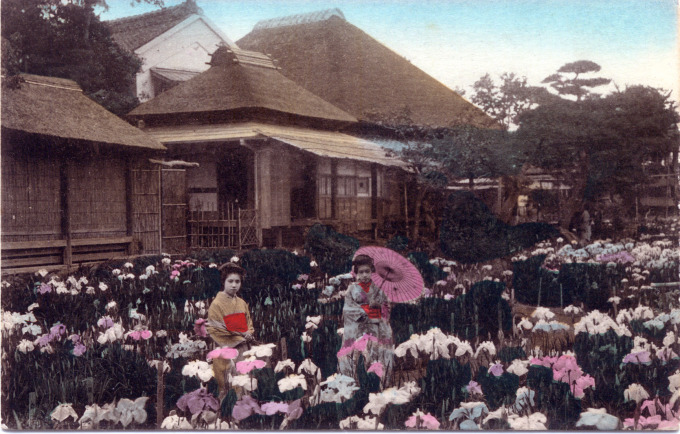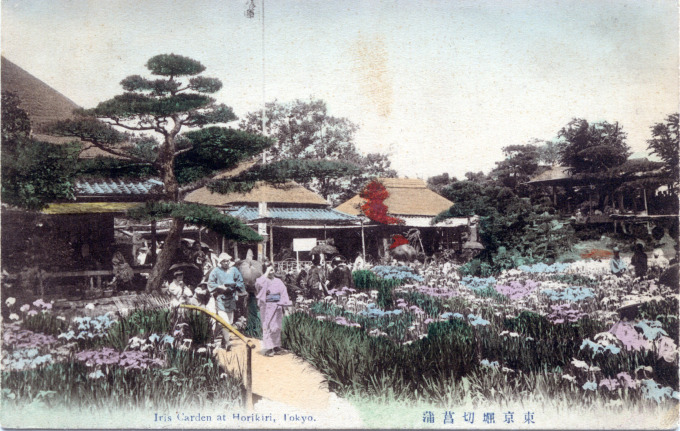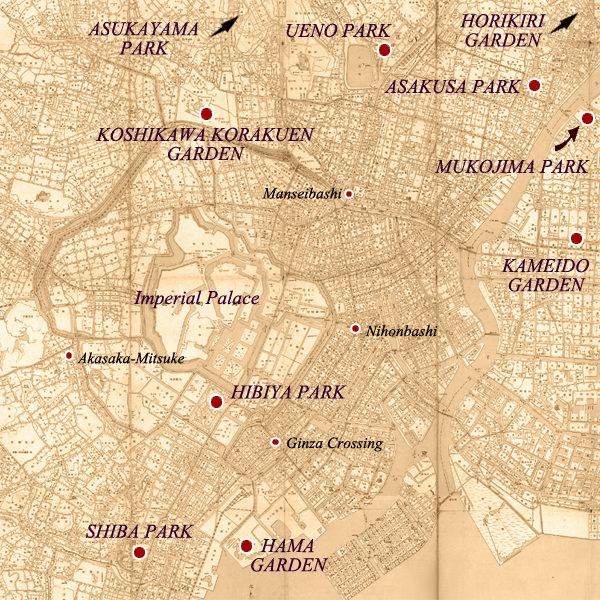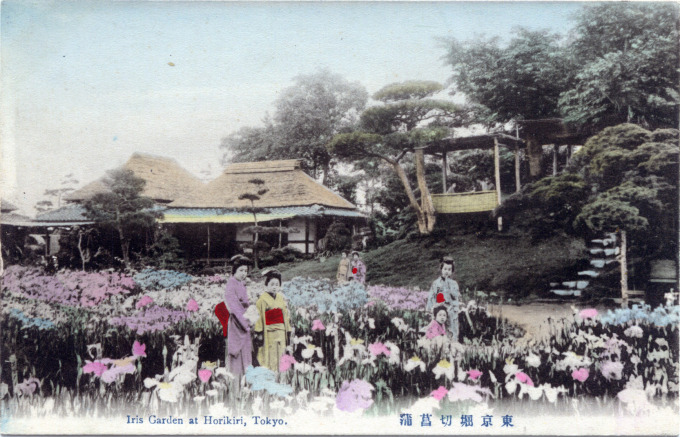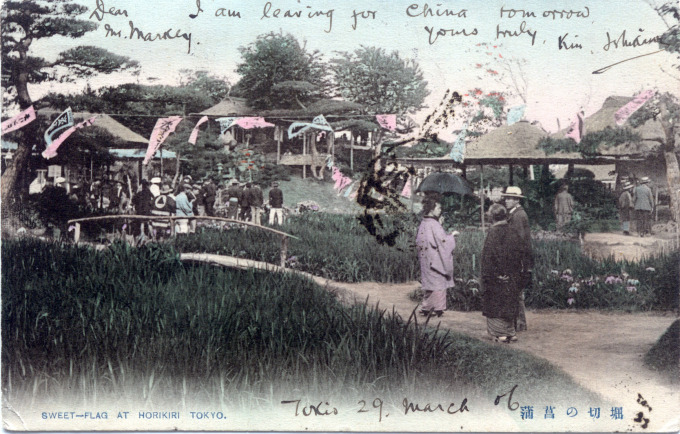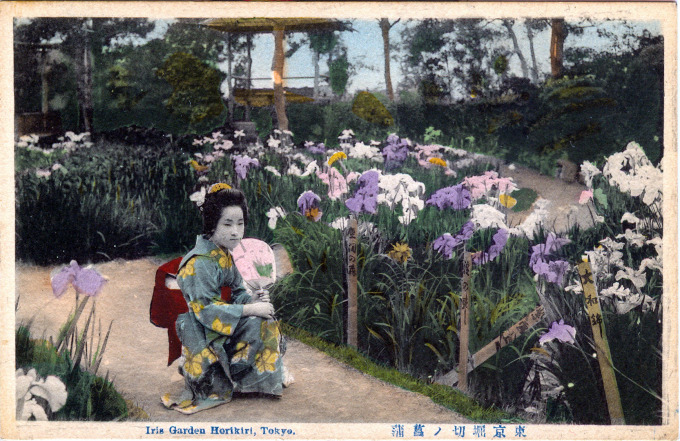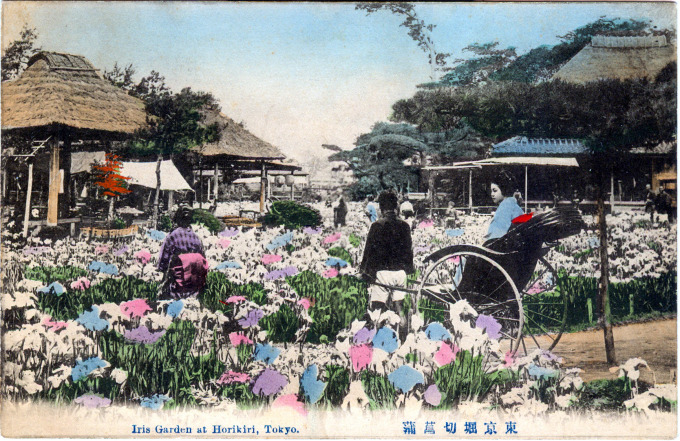The long, long journey have I traveled across the countries,
Far away from my old home in the capital of flowers,
Where my sweetheart must be longing for my return,
Wrapped in the bed clothe embroidered with irises.
– from Ise Monogatari [“Tales of Ise”]
See also:
Autumn Gardener, c. 1920.
In the Japanese Gardens, Japan-British Exhibition, London (1910).
Garden of Yasukunijinsha, Tokyo, c. 1910.
“A very special use of Japanese irises in Japan is the ritual of enjoying what is known as ‘the Act’.
“Hirao explains that this dates back to the mid-nineteenth century when, in selecting their seedlings, growers became fascinated by the mystery of the movement or act of the flower in opening. During its three-day life the petals enlarge ceaselessly until the afternoon of the third day, with the appearance of the flower changing hour after hour.
“A true Japanese lover of this ritual will meditate and watch the Act as the beautiful flower slowly opens. Watching a flower in this way leaves an impression that lasts a lifetime.”
– The Japanese Iris, Currier McEwen, 1990
- “Iris Garden at Horikiri”, Tokyo, c. 1910.
- “Iris Garden at Horikiri”, Tokyo, c. 1910.
- Maiko posing among beds of iris, Horikiri, Tokyo, c. 1910.
- “Iris Garden at Horikiri”, Tokyo, c. 1910.
“In the little village of Horikiri, situated a few miles out of Tokyo and within easy jinrikisha distance, is to be found what is perhaps the most famous iris garden in the world … To this garden, and to the founder of it, Kodaka Izayemon, we owe the iris as we see it to-day.
“… It is not generally known, perhaps, that this flower in its present remarkable state of development is so modern a product. Up to the time of Kodaka’s discovery, it was nothing more than the little wild mountain iris which has been charmingly portrayed by some of the old flower painters … But one hundred and twenty-some years ago a certain well-to-do Japanese farmer who surely had the soul of a discoverer, even if he was only a sort of head gardener in the little flower-raising village of Horikiri, in making a journey to the foot of Mount Fuji, brought back with him a specimen of the iris growing there.
“With this and two other specimens procured from different places he formed the nucleus of the garden which was to grow into what is now Horikiri Shobu-en [sweet flag iris garden]. Two samurai chanced to visit his garden, and their reports attracted others, until finally the fame of the garden reached the ear of the reigning shogun himself who came in person to see it.
“Since then the tide of visitors has annually increased until it is not only known to all Japanese, but has also become a favorite resort of the foreign tourist.”
– Historic Houses and Their Gardens, edited by Charles Francis Osborne, 1908
- “Iris Garden at Horikiri”, Tokyo, c. 1910.
- “Sweet-Flag at Horikiri”, Tokyo, 1906.
- “Iris Garden, Horikiri”, Tokyo, c. 1910.
- “Iris Garden at Horikiri”, Tokyo, c. 1910.


